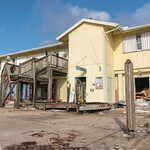CoreLogic, a global property information, analytics and data-enabled solutions provider, has analyzed natural disaster data to determine the riskiest places to live in the United States.
With exposure to hurricanes and inland floods, Plaquemines Parish, La., emerged as the most perilous place for property owners due to damages from natural disasters. Spots on or near the U.S. Gulf Coast are particularly vulnerable to potential catastrophe damages, now and in the future.
CoreLogic’s Climate Risk Analytics Composite Risk Score (CRA Composite Risk Score) identifies U.S. areas that are currently at risk and stress-tests natural disaster risks over the next 30 years across various future climate scenarios.
CoreLogic analyzes natural perils and applies the company’s analytics to its property data to provide insights into natural hazards, climate risks and the resulting impacts on the property landscape. As a result, the top 10 counties most at risk for property damage from natural disasters in 2023 are:
- Plaquemines, La. – primary risks: hurricane, inland flood
- Jefferson, La. – primary risks: hurricane, inland flood
- Monroe, Fla. – primary risk: hurricane
- McMullen, Texas – primary risk: inland flood
- Orleans, La. – primary risk: hurricane
- Lincoln, W. Va. – primary risk: inland flood
- Camas, Idaho – primary risk: wildfire
- Van Buren, Iowa – primary risk: inland flood
- Crockett, Texas – primary risk: inland flood
- Carter, Mo. – primary risk: inland flood
In examining progressively worsening climate conditions, the riskiest counties in 2050 do not change drastically:
- Plaquemines, La. – primary risk: hurricane
- Jefferson, La. – primary risk: hurricane
- Monroe, Fla. – primary risk: hurricane
- Orleans, La. – primary risk: hurricane
- Camas, Idaho – primary risk: wildfire
- Saint Bernard, La. – primary risk: hurricane
- McMullen, Texas – primary risk: inland flood
- Cameron, La. – primary risk: hurricane
- Hancock, Miss. – primary risk: hurricane
- Lincoln, W. Va. – primary risk: inland flood
This analysis considers the impactful environmental risks to 154 million properties across the U.S. and is built on CoreLogic’s data that details the physical characteristics of those homes, including construction year, first-floor height, number of stories and square footage.
Although historic events provide some indication of where natural hazard risks may be high, evolving climate change requires comprehensive, forward-looking data to clearly identify where such risks are highest.
County-level CRA Composite Risk Scores were used for this study. These scores represent the reconstruction cost value-weighted Composite Risk Scores for the single-family residences within each county.
Photo by Eastern IMT on Flickr














